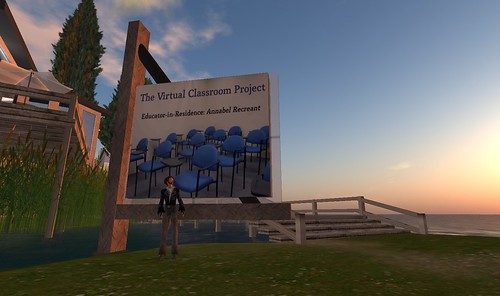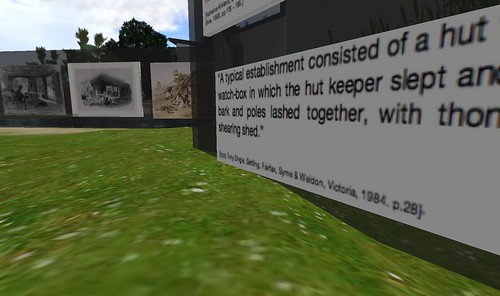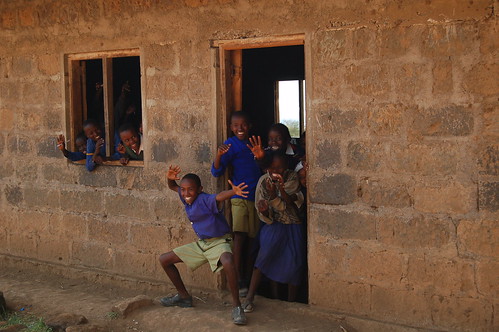The Virtual Classroom Project Continues
I am delighted to report that the Virtual Classroom Project that I started last year on the island of jokaydia in Second Life is back in full swing. An Australian educator, Annabel Astbury, has been selected to be Educator-in-Residence on jokaydia until the end of February. Her residency was launched on February 1st at the jokaydia mini Unconference (you can download the audio recording of the sessions here).
Annabel (SL: Annabel Recreant) has been busy creating a very unique project. As a teacher of history, she is interested in creating a virtual learning space where visitors can learn about "settlement / colonisation in the south east of Australia." Specifically, she is interested in creating a space where students can explore and experience "the impact that colonisation had upon indigenous communities in Australia."
Annabel wants to create a space where the students can interact with the virtual land, where they experience the life of early settlers:
What I like about her project is that Annabel wants her virtual learning space to be a place where the visitors can build and create, not just view, watch, or listen to whatever has been prepared for them. She wants the visitors to not just read about early settlers in Australia but also to interact with the virtual landscape, to make it their own and, in the process, learn about issues faced by settlers. This idea emerged from some very critical questions about the educational potential of Second Life:
To me, the problem Annabel describes here has always been a major weakness of how Second Life is used in education. It is often a place where artifacts are built for visitors and where mere reproductions of real-life lecture halls are quite common. Annabel wants to use Second Life as a place where students can build their own understanding while (virtually) building a homestead and clearing the land. She wants to engage visitors by providing them with primary and secondary sources that will then enable them to make well-informed decisions as virtual settlers. Her virtual classroom will never really be finished - it will be more of an empty canvas where visitors can construct their vision of early settler life.
Annabel envisions this project as an opportunity to show other educators how students can be encouraged to use virtual environments such as Second Life to build their own understanding of history so that it becomes visible to anyone who visits the virtual space. This is not going to be just about building a virtual space where students can click on some URLs and read secondary sources. Annabel wants to develop a virtual resource to engage students in Historical Thinking by providing them with resources they can consult and artifacts they can use to build their own understanding of history. It’s almost like creating a virtual world wiki where instead of being confronted with a carefully designed space, a student is given access to a variety of resources and tools to build that space and, in the process, demonstrate his or her understanding of the material. The wonderful part about this is that this process will make learning visible in 3D. A student who builds with the resources provided in this virtual space and by using her own understanding of the time period will create an artifact that other learners can explore, interact with, and also rebuild or redesign.
I hope that you will follow Annabel's work by reading her blog, checking out the Virtual Classroom Project Flickr group, and exploring her work inworld.





